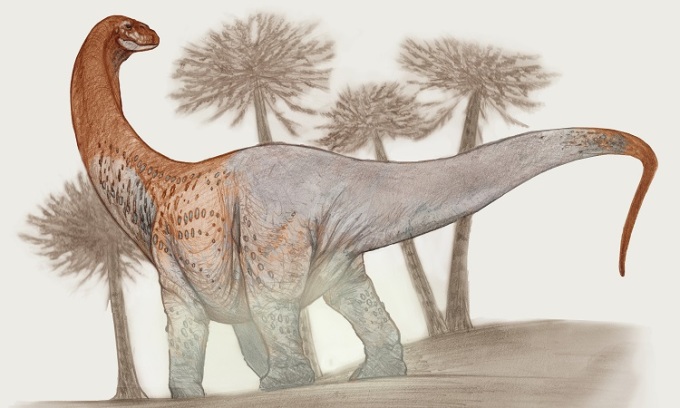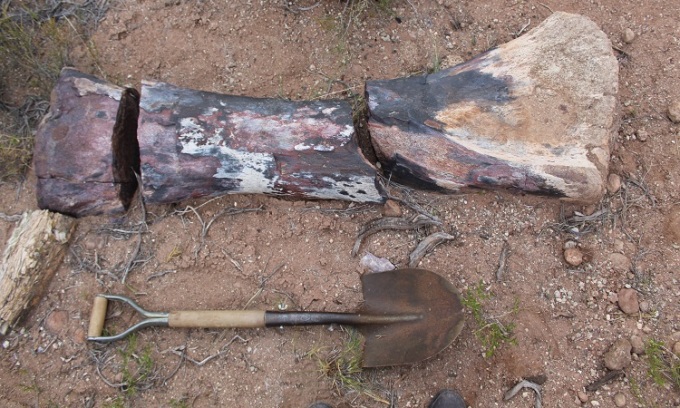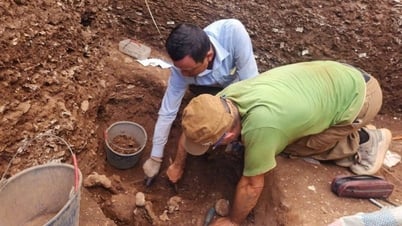90 million years ago, the nearly 30-meter-long dinosaur Chucarosaurus diripienda lived in what is now Patagonia, Argentina.

Reconstructed image of the dinosaur Chucarosaurus diripienda. Photo: Sebastián Rozadilla
Paleontologists in Argentina have discovered the fossil of a giant long-necked dinosaur measuring about 90 meters (300 feet) and living 90 million years ago, according to a study published in the June 2023 issue of the journal Cretaceous Research. Examining the massive dinosaur was no easy task. The fossil of the titanosaur, the largest of the long-necked dinosaurs, was so heavy that it caused a traffic accident when the team transported the specimen to Buenos Aires for further examination.
"The weight of the dinosaur caused the car to lose balance and cause the accident," said Fernando Novas, a paleontologist at the Bernardino Rivadavia Natural Sciences Museum in Buenos Aires and the Argentine National Research Council (CONICET). "Fortunately, no one was seriously injured. The dinosaur's bones were thrown out and were not damaged because they were too hard. On the contrary, the skeleton broke the asphalt."

The Chucarosaurus diripienda femur was 1.9 m long and required several people to carry it. Photo: Nicolas Chimento
That accident inspired the dinosaur's scientific name, Chucarosaurus diripienda . In the local Quechua language, "Chucaro" means "tough and indomitable animal," while the Latin root "diripienda" means "disorder."
In 2018, paleontologists discovered scattered, half-buried C. diripienda fossils on a hill in the Patagonian steppe in Río Negro province. The fossils included seven different bones from the forelimbs, hips, and hind legs. They were so heavy that they required several people to lift them one piece at a time, Novas said.
Living in the mid-Cretaceous period, C. diripienda weighed about 27 - 36 tons. However, it was far behind the largest and most massive dinosaurs such as Patagotitan, Argentinosaurus or Notocolossus, which weighed about 63.5 tons. Meanwhile, the longest dinosaur in history was Supersaurus, which lived about 150 million years ago in the American West, measuring more than 39 meters long. The long neck allowed C. diripienda to eat leaves from the top of trees. Its long tail was also an effective weapon against the attacks of large carnivorous dinosaurs.
An Khang (According to Live Science )
Source link






![[Photo] Party and State leaders visit former President Tran Duc Luong](https://vphoto.vietnam.vn/thumb/1200x675/vietnam/resource/IMAGE/2025/5/24/960db9b19102400e8df68d5a6caadcf6)
![[Photo] Ho Chi Minh City holds funeral for former President Tran Duc Luong](https://vphoto.vietnam.vn/thumb/1200x675/vietnam/resource/IMAGE/2025/5/24/9c1858ebd3d04170b6cef2e6bcb2019e)






























































































Comment (0)